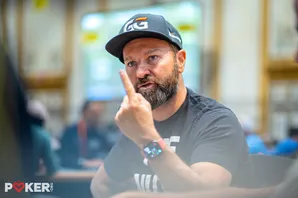One of the biggest and best poker tournament series is the European Poker Tour (EPT), which quickly rose to prominence after being created in 2004 by poker and TV veteran John Duthie (allegedly a eureka moment while he was taking a bath).
The EPT has played an important role in popularising poker across Europe and has had a lasting impact on the lives of many professional poker players and poker fans alike.
It has also been instrumental in shaping the modern poker landscape internationally. This article traces the development of the European Poker Tour under PokerStars’ leadership, from its hopeful beginnings to a place as one of the world's premier poker tournament series.
The first years of the EPT
Professional poker player and television producer John Duthie founded the EPT in 2004 when online poker exploded in popularity.
After much anticipation, the inaugural tournament finally took place in Barcelona, Spain. There were 229 entrants in the main event, and the winner was Alexander Stevic, who won €80,000 for his efforts and his bagged himself his own place in poker history.
That first season saw seven main events in Spain, London (won by John Shipley), Dublin (Ram Vaswani), Copenhagen (Noah Boeken), Deaville (Brandon Schaefer), Vienna (Pascal Perrault), and Monaco (Rob Hollink).
In its first few years, the EPT expanded rapidly. The number of stops on tour increased, with venues added in Baden in Austria, Warsaw, Dortmund in Germany, Prague, Sanremo in Italy, and various other destinations.
The prize pools grew, too. For example, the grand final in Monte Carlo in 2009 awarded €2.3 million to the winner, Pieter de Korver.
As the tour grew, the biggest names in poker began showing up at the events. Many were sponsored players, such as Phil Ivey, Daniel Negreanu, and Gus Hansen. But a host of promising young players also found their feet playing European Poker Tour events, like Liv Boeree, who won at EPT Sanremo in Season 6, or Sebastian Ruthenberg, who triumphed at EPT Barcelona in September 2008.
In general, the tour’s formative years were marked by rapid expansion, cementing the tournament's position as a frontrunner in the poker world.
The growth continues
In subsequent years, the European Poker Tour continued to expand, with entry numbers fuelled by yet more online qualifiers from the sponsor site, PokerStars. Initially, there were only a few side events at each EPT stop, but this grew into a fully-blown schedule at each tour stage.
The high roller then also became a super high roller. Omaha games and turbo tournaments found their way into a busy schedule.
Meanwhile, PokerStars had begun growing national tours like the UKIPT, France Poker Series, and Italian Poker Tour. The final of these national events was scheduled at the same stop as the European Poker Tour in the country, swelling the entry fields further.
As the popularity of EPT tournaments increased, so did the record number of players who entered. The EPT Main Event in Barcelona in 2013 attracted an incredible 1,234 players, each paying €5,300 to enter (apart from the online qualifiers).
EPT legacy
The tour has significantly benefited the poker community. One of the tour's most apparent successes is influencing the growth of poker's popularity across Europe. But being instrumental in developing the European poker scene and the mainstream acceptance of the game poker across a continent is extraordinary.
There has also been a significant impact on the lives of poker professionals. Many of the best players in the world have won events on the EPT, with many of them returning repeatedly to cash. In addition, the EPT has served as a launching pad for the professional poker careers of many players who have gone on to great success in the game.
The European Poker Tour has also shaped the international poker landscape. Why? Well, the success of the EPT prompted PokerStars to replicate the tour in other continents, hence the launch of the Asia Pacific Poker Tour (APPT) and the Latin American Poker Tour (LAPT), plus the short-lived (for legal reasons), North American Poker Tour (NAPT).
As time went on, new tech and ideas arrived, and the tour became an early adopter of live poker reporting.
The PokerStars Blog became a must-read for poker fans everywhere, developing the idea of tournament updates, often written in a witty and engaging style, accompanied by exceptional photography and video. This coverage allowed PokerStars to re-use all the content for other purposes – a frontrunner in content marketing.
Meanwhile, the company also began live streaming from the events, with the finals showing cards-up coverage, with a 30-minute delay to prevent any foul play.
Any poker player or fan unable to travel to an event had the next best thing on their computer screen (and later on their mobile phones).
Conclusion
The European Poker Tour has undergone remarkable changes since its inception in 2004, evolving from humble beginnings as a regional tour to becoming a global powerhouse in the poker world. It spawned the careers of many professional poker players and introduced us to many of the game’s characters for the first time.
In summary, the European Poker Tour has been a seminal force in the history of poker and has left an indelible mark on the game's upward trajectory. It’s safe to say that the EPT, like the World Poker Tour, will remain a powerful force in the poker world for the foreseeable future, thanks to its consistent success.
Feature image of EPT Prague in 2007, taken by Luca Venturini under CC

















